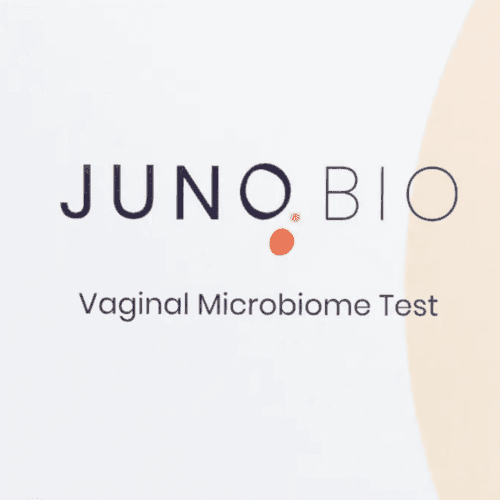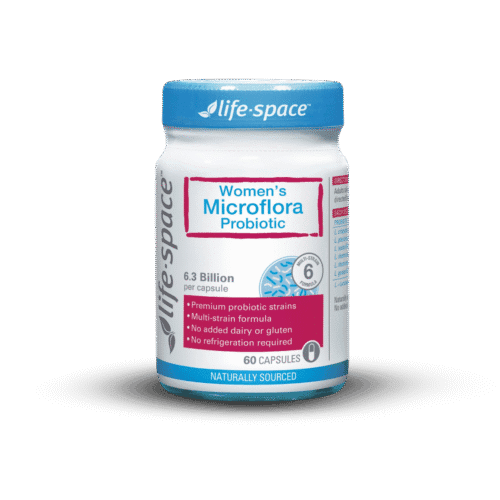Cranberries have been a beloved folk remedy for urinary tract infections (UTIs) for decades, typically in the form of sour juice, which has shown mixed and often modest benefits in trials. Modern cranberry supplements, however, are a different story.
We now know A-type proanthocyanidins, or PACs, are the main cranberry compounds that stop disruptive bacteria from sticking to your bladder lining.
Many cranberry supplements do not disclose or provide sufficient PACs, which is why many people, as well as research, have found mixed results for cranberry. Here’s what cranberries can actually do for your vaginal and urinary tract health, how much PAC you need, and how to choose a decent product.
What PACs are and why they matter
PACs are plant compounds found in many fruits, but cranberries contain a special subtype called A-type PACs. These are the best-studied PACs for stopping uropathogenic Escherichia coli, one of the main culprits in UTIs, from attaching to bladder and urethral cells.1
Think of it like interfering with velcro. E. coli use tiny, sticky fimbriae to attach to your tissues. A-type PACs jam up the hooks. The bacteria can’t stick properly, which means they are flushed out more easily when you urinate.
Cranberry is not an antibiotic. It doesn’t kill bacteria; it simply reduces their ability to adhere. That makes cranberry a preventive tool, not a treatment for an active UTI.
How many PACs you need to see an effect
The PACs are the crucial part that makes or breaks a cranberry supplement.
The 36mg threshold
Evidence repeatedly shows that urinary anti-adhesion effects occur only when at least 36mg of A-type PACs are consumed per day.2–4
Below this level, cranberry doesn’t do anything meaningful.
Higher doses work better
Around 72mg PAC per day produces stronger and more sustained anti-adhesion activity across the day–night cycle.2–4
This is why high-quality supplements list their PAC content and specify that the measurement was done using the BL-DMAC method. Anything else is guesswork.

What cranberry is actually useful for
Preventing recurrent uncomplicated UTIs
Preventing UTIs are where cranberry performs best. When taken daily for 12–24 weeks at PAC doses of 36mg or more, standardised extracts reduce the frequency of recurrent UTIs and extend the time between infections.2–4
Cranberry doesn’t cure a UTI. It helps prevent the next one.
Bladder sensitivity and overactive bladder symptoms
Trials using whole-cranberry powders at 500mg per day have shown improvements in urinary frequency, urgency, and general bladder comfort.5 These powders aren’t necessarily high in PAC, suggesting additional cranberry compounds may support bladder function.
Pregnancy
Data in pregnancy are limited and mostly from juice-based trials with poor adherence. A recent systematic review suggests pregnant women with recurrent UTIs might benefit from PAC-standardised cranberry, but specific capsule doses and regimens still need to be confirmed in high-quality trials.6
High-risk groups
A modern cranberry phytosome extract at 120mg per day has reduced UTIs in diabetic postmenopausal women taking SGLT2 inhibitors, a notoriously high-risk group.7
What cranberry does not do
Treat an active UTI
Cranberry will not kill bacteria, relieve acute symptoms, or replace antimicrobial treatment. It is supportive and preventive only.
Overcome structural bladder problems
Evidence for cranberry is weak or inconsistent in people with significant voiding dysfunction, neurogenic bladder, indwelling catheters, or in frail elderly adults in long-term care.8
Work when PAC levels are too low
Supermarket cranberry capsules often either do not disclose PAC content or provide far less than the 36 mg per day associated with clinical benefit.
Choosing a good cranberry supplement
Look for the PAC content
You want 36–72mg A-type PACs per day. If the label doesn’t list PAC content, assume it’s not worth using.
Check for BL-DMAC testing
BL-DMAC is the validated method for measuring PACs. Anything else is unreliable.
Ignore mg cranberry extract
A label claiming 20,000mg cranberry equivalent or 500mg extract means nothing for our purposes. Only PAC content matters.
Choose the supplement based on your goals
• PAC-standardised extract – best for preventing recurrent UTIs
• Whole-fruit cranberry powder – helpful for bladder comfort, urgency, overactive bladder
• Cranberry phytosome – useful in high-risk groups and in peri-/postmenopause
Skip the juice
Cranberry juice contains inconsistent PAC levels and usually lots of sugar. You’d need litres to reach therapeutic PAC levels.
Using cranberry as part of a vaginal and urinary health strategy
Cranberry works best when used in conjunction with other vaginal and urinary tract support products.
• Support your vaginal microbiome, especially Lactobacillus crispatus
• Address vaginal dryness or low oestrogen if relevant
• Maintain mucosal health with tools like sea buckthorn oil or lactulose-based formulations
• Consider D-mannose, targeted antimicrobials, or custom pessaries where appropriate
• Stay hydrated and respond to your own triggers such as sex, underwear choices, and hormonal shifts
Cranberry is one piece of a much larger picture.
What to look for in a cranberry product
Cranberry works, but only when the PAC content is high enough. Look for 36–72mg A-type PACs per day, measured using the BL-DMAC method. Choose products that list their true PAC content and ignore the supermarket fluff.
Useful for preventing recurrent UTIs, supporting bladder comfort, and assisting high-risk groups. Not useful for treating active infections or overcoming mechanical bladder issues.
Cranberry and UTI FAQ
Cranberry can help prevent recurrent urinary tract infections, but only when the supplement contains enough A-type PACs. These compounds reduce the ability of E. coli to stick to the bladder wall, lowering the chance of infection developing. Cranberry does not treat an active UTI and works best as a long-term prevention tool.
It is not the amount of cranberry that matters, but the amount of A-type PACs. Research shows you need at least 36mg PACs per day for a measurable anti-adhesion effect. Many high-quality supplements contain 36–72mg PACs per daily dose. Cranberry products that don’t list PAC content rarely provide enough to work.
PACs are proanthocyanidins, a group of polyphenols naturally found in cranberries. A-type PACs interfere with the fimbriae bacteria use to stick to the bladder lining. This reduces bacterial adhesion and helps prevent recurrent UTIs. PAC content is the most important indicator of whether a cranberry product is effective.
The most effective supplements for UTI prevention are those standardised to contain 36–72mg of A-type PACs per day, measured using the BL-DMAC method. Products that list only milligrams of cranberry extract are not reliable, because PAC content can vary widely. Whole-cranberry powders and cranberry phytosome extracts are also useful, depending on your symptoms and risk profile.
Cranberry juice is unlikely to prevent UTIs because it typically contains low and inconsistent levels of A-type PACs. You would need to drink impractical amounts to reach therapeutic PAC levels. Most commercial juice also contains sugar, which is not ideal for bladder or vaginal health. Standardised cranberry supplements are far more effective.
Cranberry is generally safe for long-term use in healthy adults. It may occasionally cause mild digestive upset. People with calcium oxalate kidney stones should use cranberry cautiously, and those taking warfarin should speak with a practitioner because of rare case reports of interaction.
Yes. Cranberry, D-mannose, and vaginal or oral probiotics work through different mechanisms and can be safely combined. Cranberry reduces bacterial adhesion in the bladder, D-mannose interferes with E. coli type-1 fimbriae, and probiotics support the vaginal microbiome. Many people use all three as part of a multi-step UTI prevention plan.
Cranberry is a long-term prevention strategy. Studies show the best results after 8–24 weeks of consistent daily use. Some people notice fewer urinary symptoms within a month, but a meaningful reduction in recurrent UTIs usually requires continued use over several months.
Cranberry may help reduce the chance of a post-sex UTI by limiting bacterial adhesion, but it is most effective when taken daily rather than only after sex. Some people use cranberry alongside D-mannose or targeted vaginal probiotics for post-coital UTI prevention.
Some evidence shows that whole-cranberry powders at around 500mg per day can reduce urinary frequency, urgency, and overall bladder discomfort, even though these extracts are not always high in PACs. This suggests cranberry may provide benefits beyond UTI prevention.
Cranberry is less effective in people with neurogenic bladder, significant voiding dysfunction, indwelling catheters, or in frail elderly adults living in care facilities. In these groups, mechanical or neurological factors outweigh cranberry’s anti-adhesion effects.
References
- 1.Howell AB, Botto H, Combescure C, et al. Dosage effect on uropathogenic Escherichia coli anti-adhesion activity in urine following consumption of cranberry powder standardized for proanthocyanidin content: a multicentric randomized double blind study. BMC Infect Dis. Published online April 14, 2010. doi:10.1186/1471-2334-10-94
- 2.Xiong Z, Gao Y, Yuan C, Jian Z, Wei X. Preventive effect of cranberries with high dose of proanthocyanidins on urinary tract infections: a meta-analysis and systematic review. Front Nutr. Published online November 28, 2024. doi:10.3389/fnut.2024.1422121
- 3.Williams G, Hahn D, Stephens JH, Craig JC, Hodson EM. Cranberries for preventing urinary tract infections. Cochrane Database of Systematic Reviews. Published online April 17, 2023. doi:10.1002/14651858.cd001321.pub6
- 4.Babar A, Moore L, Leblanc V, et al. High dose versus low dose standardized cranberry proanthocyanidin extract for the prevention of recurrent urinary tract infection in healthy women: a double-blind randomized controlled trial. BMC Urol. Published online March 23, 2021. doi:10.1186/s12894-021-00811-w
- 5.Cho A, Eidelberg A, Butler DJ, et al. Efficacy of Daily Intake of Dried Cranberry 500 mg in Women with Overactive Bladder: A Randomized, Double-Blind, Placebo Controlled Study. Journal of Urology. Published online February 2021:507-513. doi:10.1097/ju.0000000000001384
- 6.Bolgarina Z, Merriam AA, Gonzalez-Gonzalez LF, Betancourt-Villalobos JG, Rodroiguez GV, Camacho A. Cranberry Supplements for Urinary Tract Infection Prophylaxis in Pregnant Women: A Systematic Review of Clinical Trials and Observational Studies on Efficacy, Acceptability, Outcomes Measurement Methods, and Studies’ Feasibility. Cureus. Published online October 9, 2023. doi:10.7759/cureus.46738
- 7.Rondanelli M, Mansueto F, Gasparri C, Solerte SB, Misiano P, Perna S. Supplementation with Highly Standardized Cranberry Extract Phytosome Achieved the Modulation of Urinary Tract Infection Episodes in Diabetic Postmenopausal Women Taking SGLT-2 Inhibitors: A RCT Study. Nutrients. Published online July 2, 2024:2113. doi:10.3390/nu16132113
- 8.Caljouw MAA, van den Hout WB, Putter H, Achterberg WP, Cools HJM, Gussekloo J. Effectiveness of Cranberry Capsules to Prevent Urinary Tract Infections in Vulnerable Older Persons: A Double‐Blind Randomized Placebo‐Controlled Trial in Long‐Term Care Facilities. J American Geriatrics Society. Published online January 2014:103-110. doi:10.1111/jgs.12593








